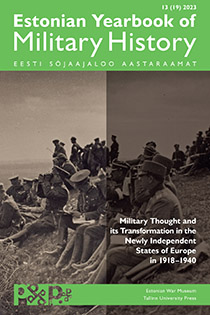Abstract
General Johan Laidoner’s activities as commander-in-chief during Estonia’s interwar period are often associated with his doctrine of active defence. While direct documentation is limited, scholars have reconstructed this doctrine from archival sources and analysed its defensive applications. This study examines how Laidoner’s active defence principles influenced Estonia’s military modernisation planning. Following the 1934 coup, Laidoner possessed unprecedented powers, providing him significant freedom to implement his strategic vision. The research addresses two questions: What were the main strategic and tactical principles of Laidoner’s active defence doctrine, and what were their foundations? Can these principles be identified in Estonia’s 1938 Defence Modernisation Plan? The analysis focuses primarily on the latter question, as development plans represent crucial forward-looking strategic management tools. The 1938 plan and accompanying discussions provide the clearest evidence of Laidoner’s commitment to implementing active defence principles within the evolving security environment of the late 1930s.

This work is licensed under a Creative Commons Attribution-NonCommercial-NoDerivatives 4.0 International License.
Copyright (c) 2025 Eesti Sõjaajaloo Aastaraamat / Estonian Yearbook of Military History
